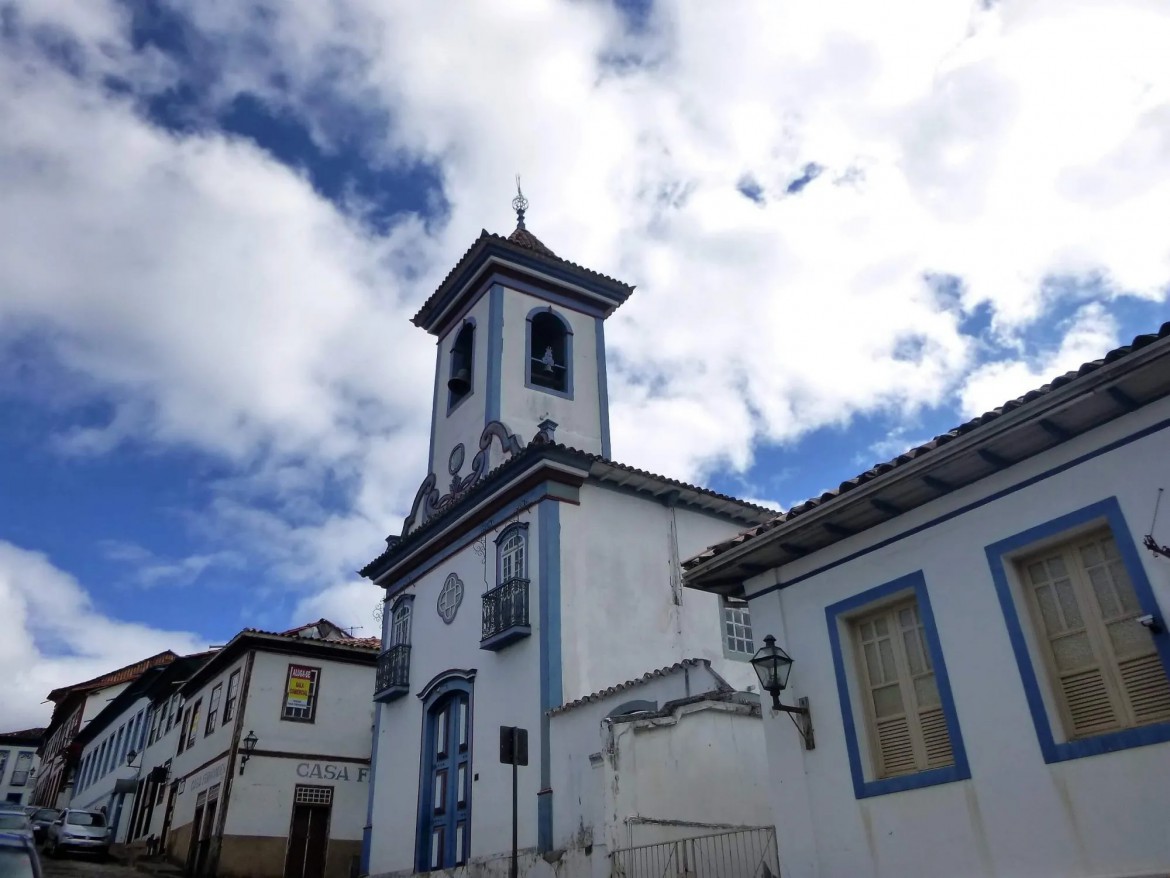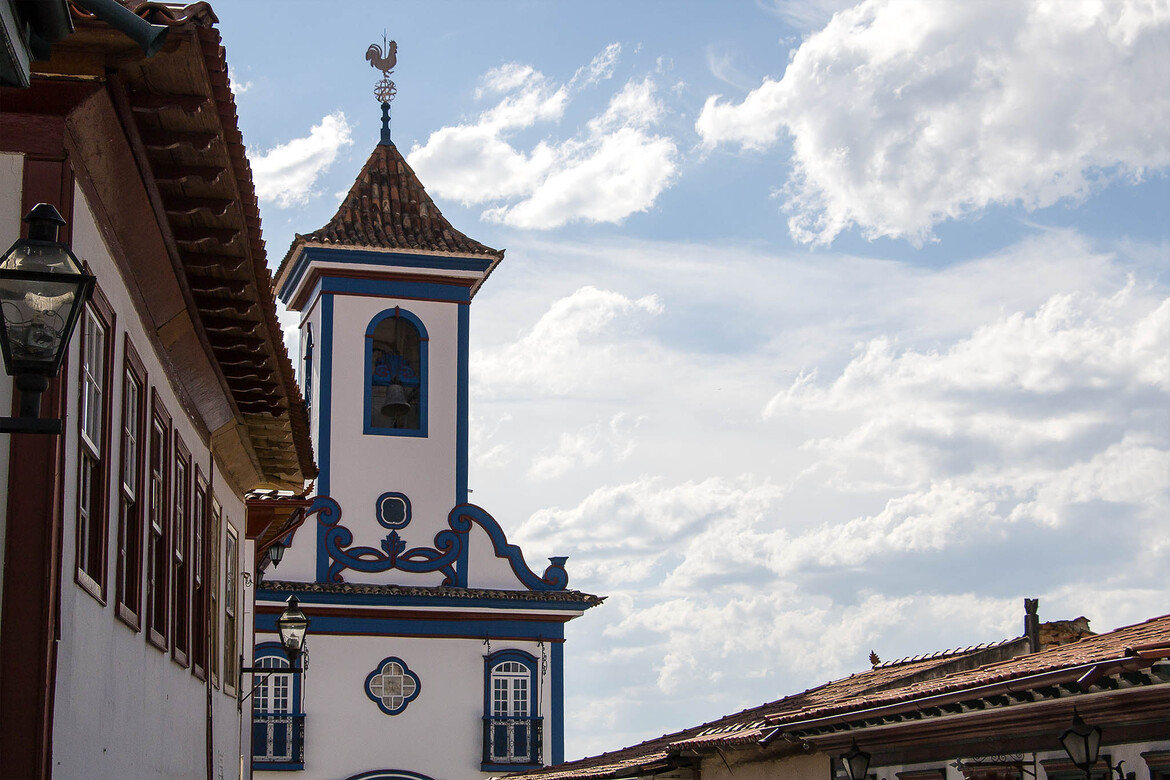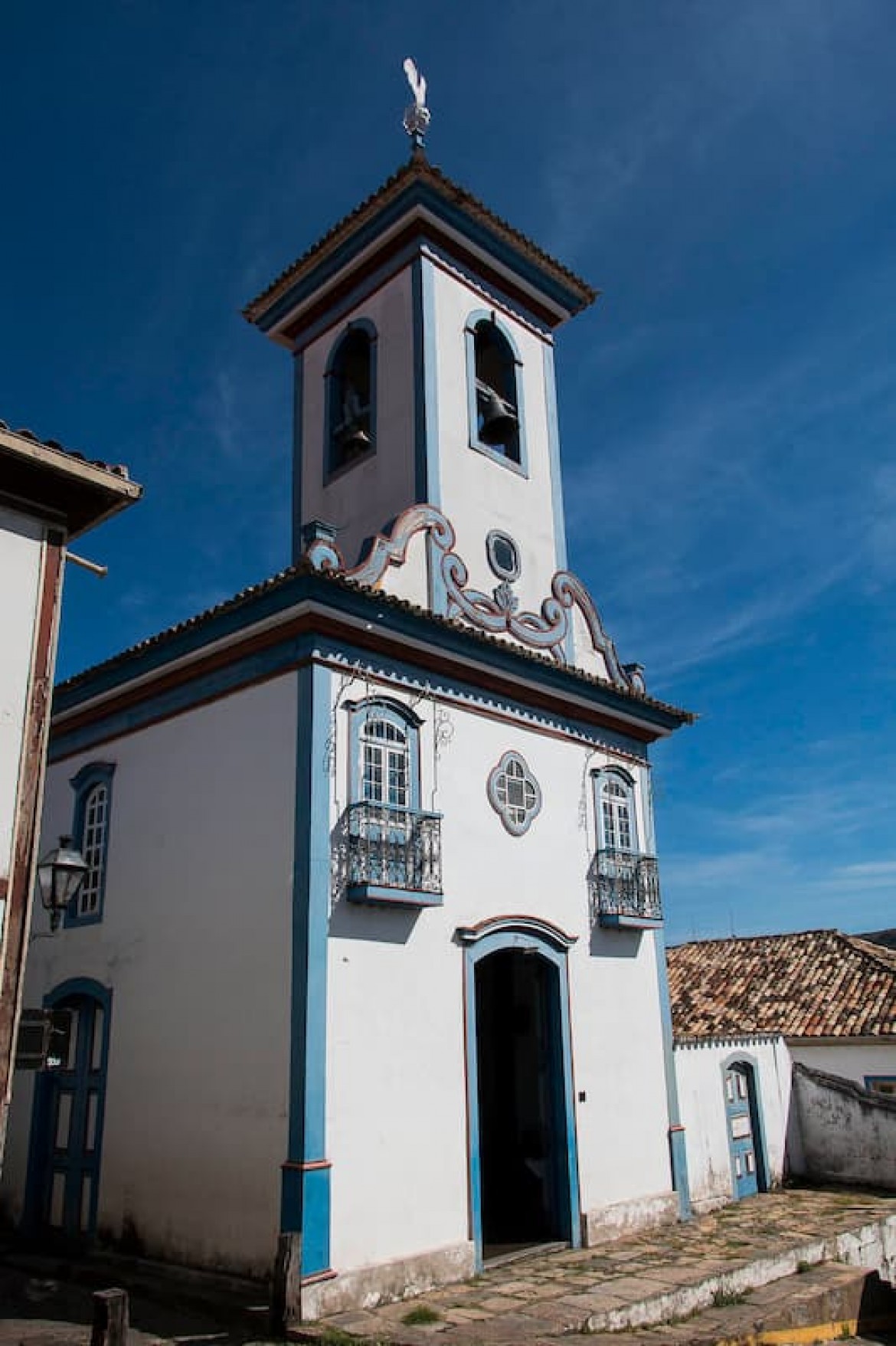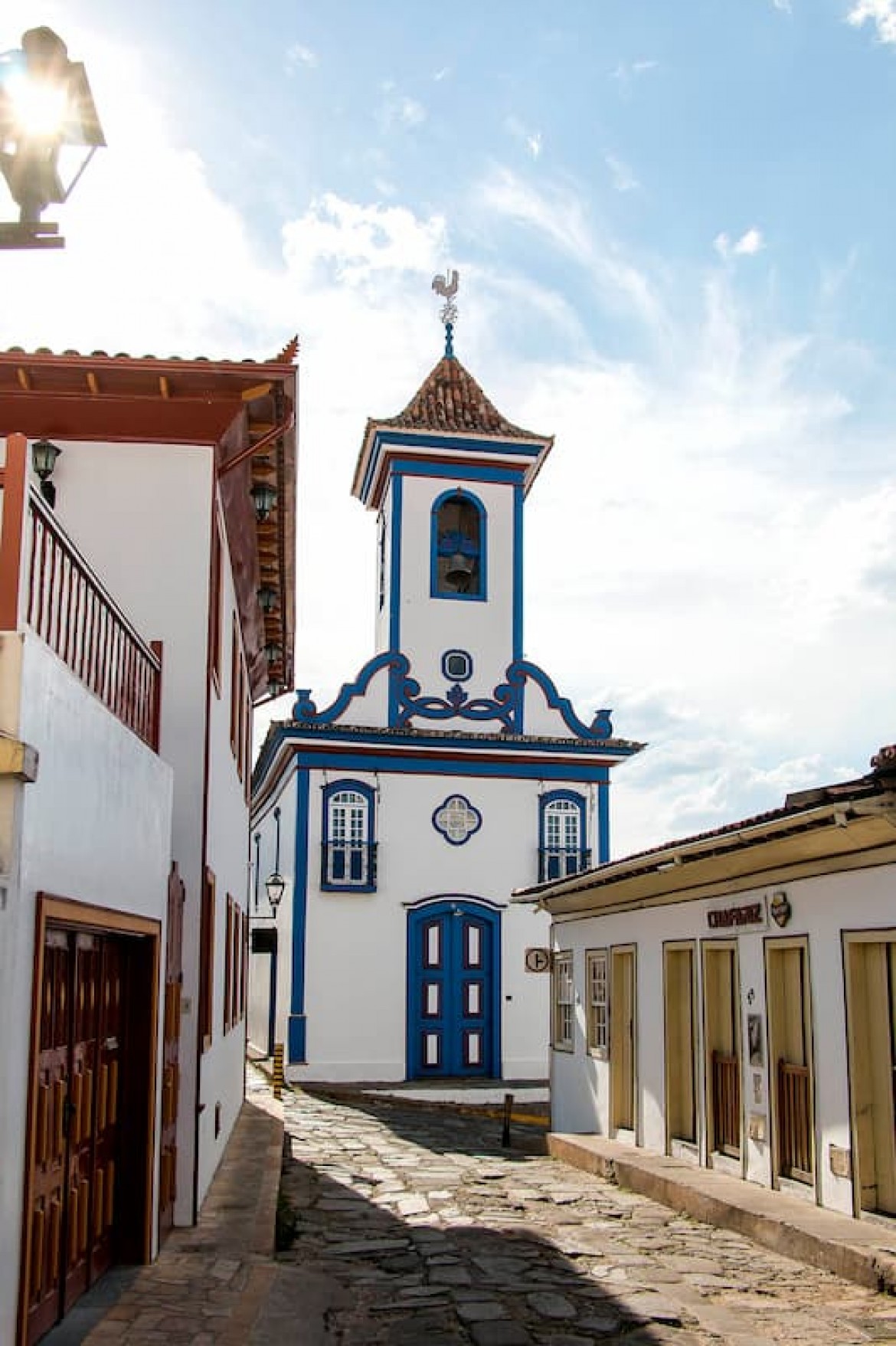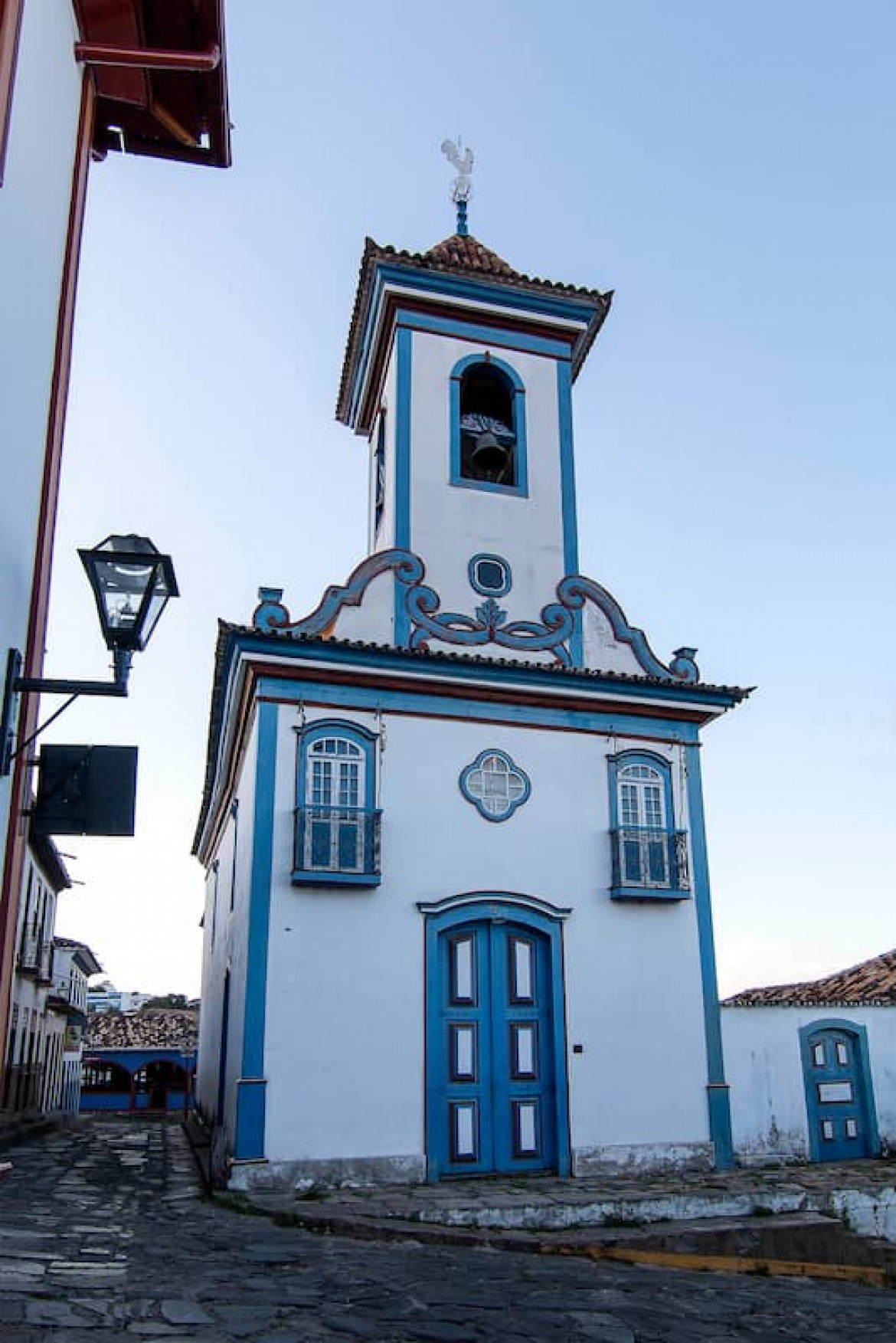Descrição: Ano de Construção: 1773
A autorização para construção da Capela de Nossa Senhora do Amparo data de 17 de novembro de 1756, mas a sua conclusão só se deu em 1776.
Foi construída pela Irmandade dos Pardos do Arraial do Tijuco e possui altares trabalhados em estilo barroco-rococó, destacando-se o púlpito em forma de cálice e as imagens do século XVIII.
Dentre os trabalhos de acabamento e ornamentação atribuídos ao pintor e irmão da Ordem, Silvestre de Almeida Lopes, se destacam: a pintura, o douramento da Capela e a pintura dos dois altares do arco do cruzeiro (1796). Ao longo do século XIX passou por várias reformas, como a demolição da antiga torre em 1813 que, por ser de pedra, causou danos à estrutura do edifício, sendo reedificada cinco anos depois.
Merece especial referência a expressividade das imagens de Nossa Senhora do Amparo, Nossa Senhora do Parto, Sant’Ana, Santa Bárbara e Santa Rita. No altar da direita, há um presépio do final do século XVIII, doado à Irmandade em 1797 por Frei Joaquim de Nossa Senhora de Nazaré.
Foi decorado minuciosamente com centenas de conchinhas das minas de salitre da região, e pintado por Caetano de Miranda.
Date of construction: 1773
The authorization for the construction of the Chapel of Nossa Senhora do Amparo dates back to November 17, 1756, but its completion only occurred in 1776. It was built by the the Pardos of Arraial do Tijuco Brotherhood and features altars crafted in baroque-bococo style, with the pulpit standing out in the shape of a chalice and images from the 18th century.
Among the finishing and ornamentation distinguished works attributed to the painter and brother of the Order, Silvestre de Almeida Lopes, are: the painting, gilding of the Chapel, and painting of the two crossing-arch altars (1796). Throughout the 19th century, it underwent several renovations, such as the demolition of the old tower in 1813, which, for being made of stone, caused damage to the structure of the building, being rebuilt five years later.
Special mention should also be made of the expressiveness of the devotional statues of Our Lady of Amparo, Our Lady of Childbirth, St. Anne, St. Barbara, and St. Rita. On the right altar, one also finds a Nativity scene from the late 18th century, donated to the brotherhood in 1797 by Friar Joaquim de Nossa Senhora de Nazaré.
It was meticulously decorated with hundreds of shells collected from the saltpeter mines of the region and painted by Caetano de Miranda.
Localização: R. do Amparo, 129, Diamantina.
Distância: Localizada no Centro Histórico.
Taxas: R$ 10,00
Contatos: (38)3531-1580
Horários: Quinta a Segunda de 09:00 às 12:00
Mapa:
Mapa:

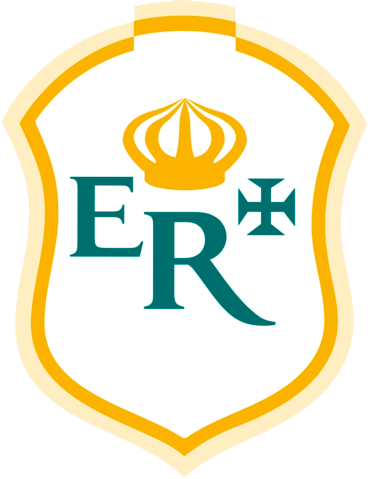 Estrada Real
Estrada Real
